tl;dr
If you’re looking to get in wild camping or bike packing, this is an affordable, lightweight option that offers more protection than a traditional bivvy bag and is considerably smaller to pack down than a tent.
Note: The term bivvy is an abbreviation of its formal name is bivouac (pronounced bivvy-wak). Some people spell it other ways but I have always spelt it bivvy and it’s also the only accepted spelling of it in scrabble… so you know, 16 points for me.
Backpacking and bikepacking have a lot of crossovers, for many the idea of cycling gives you freedom to see more. Once you are sufficient to ride over multiple days your options for adventures are endless.
One thing that can restrict you with cycling is size, weight and the amount of things you can physically take with you. Backpacks are always an option, but for most, being able to take weight off your person and onto your bike is one of the many advantages of traveling by bike.
It tends to be a rule of thumb with camping gear that the smaller and lighter you go the more expensive things become. Alpkit have been trying to break the mould of this perception by offering high quality gear at a much more accessible price.
Before we get into the specifics of the Elan, it’s probably important to explain what a hooped bivvy is. Feel free to skip over this if you already know!
Hooped Bivvies
Most people, regardless of experience, are familiar with tents. A contained shelter, held up by poles, and now more commonly with an inner shell for extra protection and breathability. By definition a bivvy is a temporary camp without tents. Traditionally this would usually consist of setting up some sort of temporary shelter using natural materials, nowadays most people would use a tarp. However in its rawest form, bivvying is literally sleeping outdoors with some sort of protection from the elements — cue the bivvy bag.
Bivvy bags (sacks) are used widely by the military due to their compact size, discreteness and ability to be used almost anywhere. They were popularised by backpackers and climbers which ultimately led to them getting smaller and lighter. They are essentially a bodybag shell that you can sleep in whilst in your sleeping bag; that offers more protection from the elements — wind, rain and temperature. Most can be done up so that there is a hole small enough for your mouth but some can now be fully enclosed. They are the most basic form of shelter you can have.
The problem I find with bivvy bags is you are sleeping in what is essentially a bodybag. This is not for everyone, myself included. Whilst I have bivvied with tarps and a sleeping bag in the warmer months, my preferred outdoor sleeping method is a tent, especially in the UK where we have this thing called weather. For anyone who gets claustrophobic they are a no go and I have never been sold on the idea of a bivvy bag, they just aren’t for me.
It’s important to note bivvying and camping in a tent are very different. Many tents are designed to be pitched for more than one night. Bivvying is about setting up and packing down quickly and discreetly, potentially anywhere. This means there is always going to be a compromise on comfort — so if you’re coming from a traditional camping background you are perhaps not going to get the same quality of sleep straight away.
This is where hooped bivvies come in. They bridge the gap between tents and a bivvy bag. They are essentially an enclosed bivvy bag, however they will have at least one pole (hoop) at the head end allowing you to be fully enclosed, but with room around your head, negating the need for a tarp. Some hooped bivvies will have poles at the foot, but most will just have somewhere to attach a guy rope should you want the extra breathability around your legs and feet — this is what the Elan has.
For simplicity’s sake — a hooped bivvy is a full enclosed single shell shelter with at least one pole (hoop) allowing for breathability.
First impressions
The first thing you’ll notice is how small and light the Alpkit Elan is packed. After packing it back down I actually got even smaller, and I have used a 500ml bottle as reference for how small this really is. For those who have an interest in weight, it’s listed as sub 1kg and on my scales it comes in at 945g. Pitched size is 225 x 77* x 45cm (L x W x H) (*Tapers to 72cm at the foot) and packed size is 39 x 11cm (L x D), although will pack down smaller.
My first concern prior to testing this was the poles. Pole length can limit how you pack and is fundamentally the big difference between this and a bivvy bag. As the Elan has two poles, my concern was they would be long and heavy. I’m pleased to say this was not the case and one the areas where the Elan excels. Their compacted length comes to about 23cm: this is the smallest I’ve come across. Many looped bivvies have much longer poles when folded down around 40-50cm which can limit where you keep them on your bike, especially due the curved shape of a lot of them.
Being this short means they can be stored in most bike bags with ease should you want to pack things separately. I always tend to keep my poles in my frame bag as it allows for the bivvy to be folded down even smaller, but you can easily fit them in a lot of places other hooped bivvies and tents couldn’t.
Not only are the poles short, they are also really solid. Made from 7001 aluminum they are strong but light. As is expected with folding poles nowadays, elastic runs inside making them snap into place quickly with a very satisfying click.
Another nice surprise was the pegs. For the price I was expecting the standard cheap steel pegs that bend at the first sight of any force. Not only do these look nice (anodized stuff always looks great) they are functional with their Y-Beam design making them stronger. Like the poles they are also aluminium, once again keeping the weight down. Little paracord loops helps getting them out of hard ground, too.
The final piece is of course the actual bivvy. Firstly, its flavour — kelp. On giving it a quick lick I can confirm it is green, a darker green at that. Which is great, as it’s very inconspicuous for most wild camping situations. Once again, I was impressed with the size of it. The total length is 225cm, that’s well over 7ft! For a shorty like me (5ft 8”) this gives plenty of room, but even for those around the 6ft mark this is more than comfortable.
The quality of material used and the construction appears really good, which is 70D ripstop Nylon (10K HH / 6.5K MVTR) with the groundsheet built-in (5K HH). Once again this aids in the lightness of this bivvy. A lot of military-style hooped bivvies are Gore-Tex which is thick and heavy, totally overkill for the casual wild camper or bikepacker.
Setting up
View this post on Instagram
Setting up is super simple, there’s no instructions as with most camping gear and most likely because it’s so simple! It can be set up free standing if you’ve found yourself a nice audax hotel, but with it pegged in it doesn’t feel like it’s going anywhere.
The only thing it lacks is a guy rope should you want to have the foot end raised (though you could easily add your own). Interestingly, it is a central loop which gives a more traditional tent shape, but the shape of the construction is actually square, giving you more room than you expect.
What’s inside?
A great feature is the pockets at the head end which are super handy to put things like your torch and phone etc. Due to the shape being wider at the head end, there is also actually space to keep something next to your head and shoulders as well. As I mentioned earlier there is a load of foot room, I have been keeping shoes, helmet and bike bags down there with no problems for space so they stay dry.
Speaking of dryness. Being single-shelled, moisture is something that is always going to happen. One of the great bits of design with the Elan is it has two ventilated meshed areas. One is behind your head — which effectively works as a little window. It has a little tarp that you can pull out over if it’s raining for protection, but if it’s dry, it’s nice to keep it open so you have a little window.
The second is in front of your head. You can choose to fully zip the bivvy up, or zip it back (there is a double zip) revealing a forward facing mesh. This is great for those humid and hot dry times as it really lets the air flow through and again means you can see out if you have a nice view.
Some considerations worth noting are if you have the second mesh closed there isn’t going to be as much breathability, this is fine in most scenarios, but if it’s humid and wet, you may want to bring a tarp just for that extra protection as there is no water protection if the second is open.
This is also quite a low hooped bivvy. If you have a larger mat (I have an inflatable one with pillow) you will lose some of the head room. I still think this is more than acceptable and I’m still able to easily use my phone while in it, a luxury you’re not going to get with a traditional bivvy.
What is the background of the brand?
Alpkit is a British company, with a slogan ‘Go Nice Places Do Good Things’, and their product holds true to this. They’re about facilitating you to get out and do nice things. With a focus on quality (they market themselves as premium) at accessible prices they have really shaken up the market and their reputation holds true with their products being incredible value for money.
You can learn all about their history and what they’re achieving here.
The Alpkit Elan has been long term tested over a year. I’ve yet to fully test it in heavy rain (because I don’t have much intention on bivving in that if I have the choice) but have water tested it to check for leaks and camped in humid and damp conditions and it’s held up great. From researching, they hold up really well in the rain.
The Alpkit Elan verdict
I would definitely recommend this — and already have. I have had friends who looked into ordering one after spending time with me using mine and know several people who are keen to read this review before joining us. I just need to take this to the Elan Valley next where I feel it would be very much at home!
I personally think this is fantastic value for money — but the price still isn’t quite as accessible as it could be for some people. I genuinely believe it’s investing in spending the extra money over a traditional bivvy for the additional comforts it provides.
Alpkit Elan Hopped Bivvy
£99.99 €119.95Pros
- Price makes this accessible to many people
- Compacted size is tiny & lightweight
- Impressive level of quality for the price
Cons
- Would benefit from an additional front zip / entrance: it would be nice on a clear evening to be able to lie on your front and not have to look out through the mesh
- Whilst the breathability is fantastic for most situations — you may need still want to use a tarp in humid or wet conditions
Last modified: 22nd June 2021
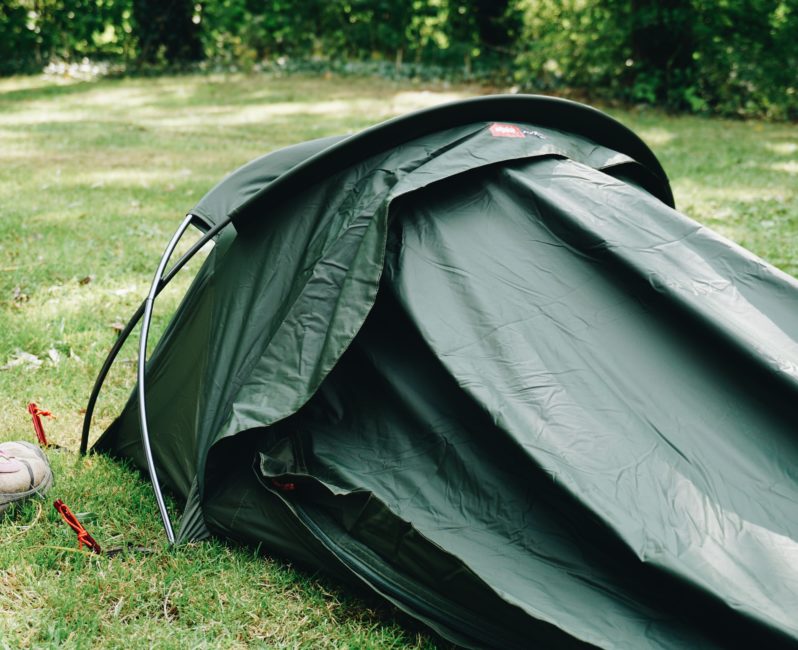
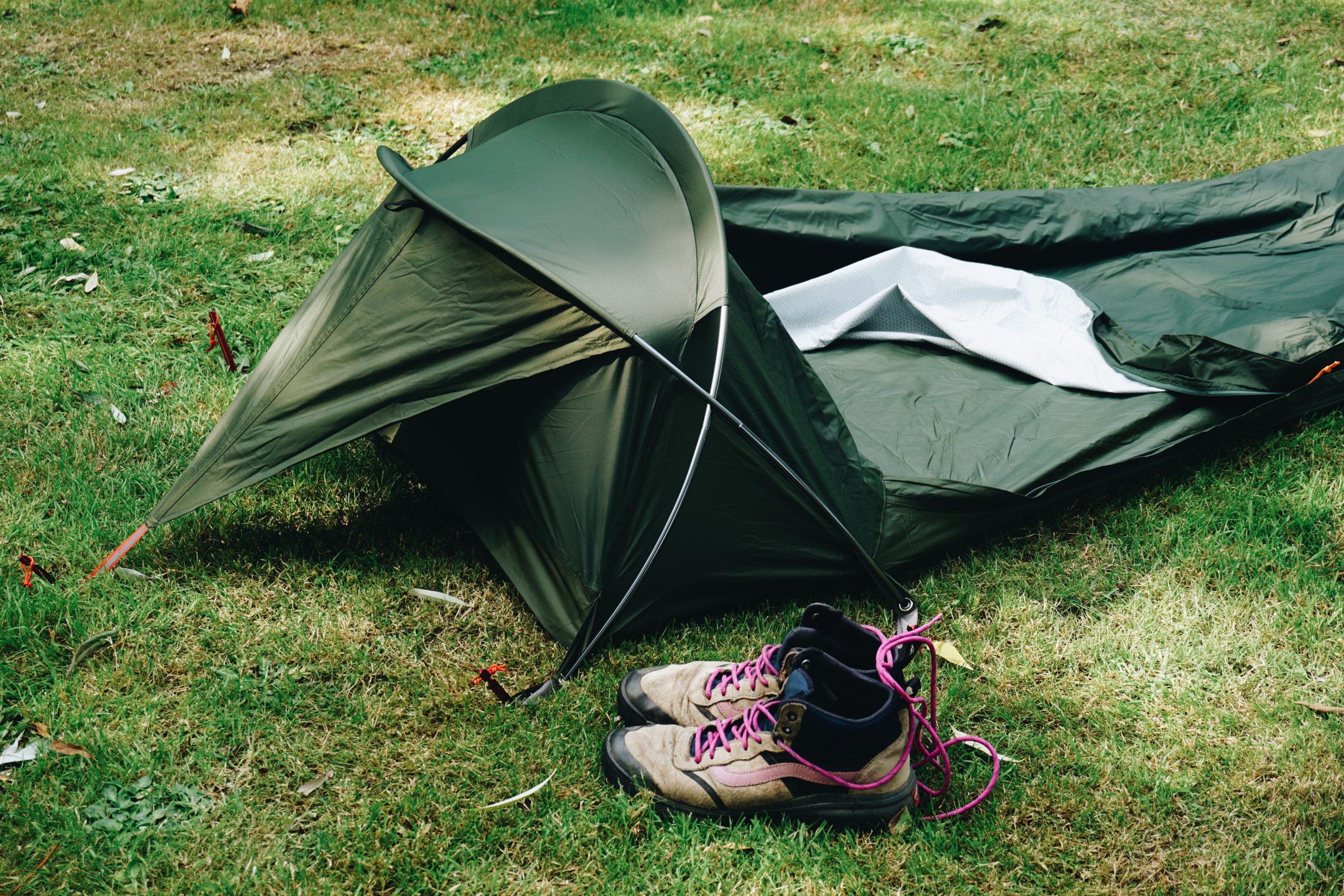
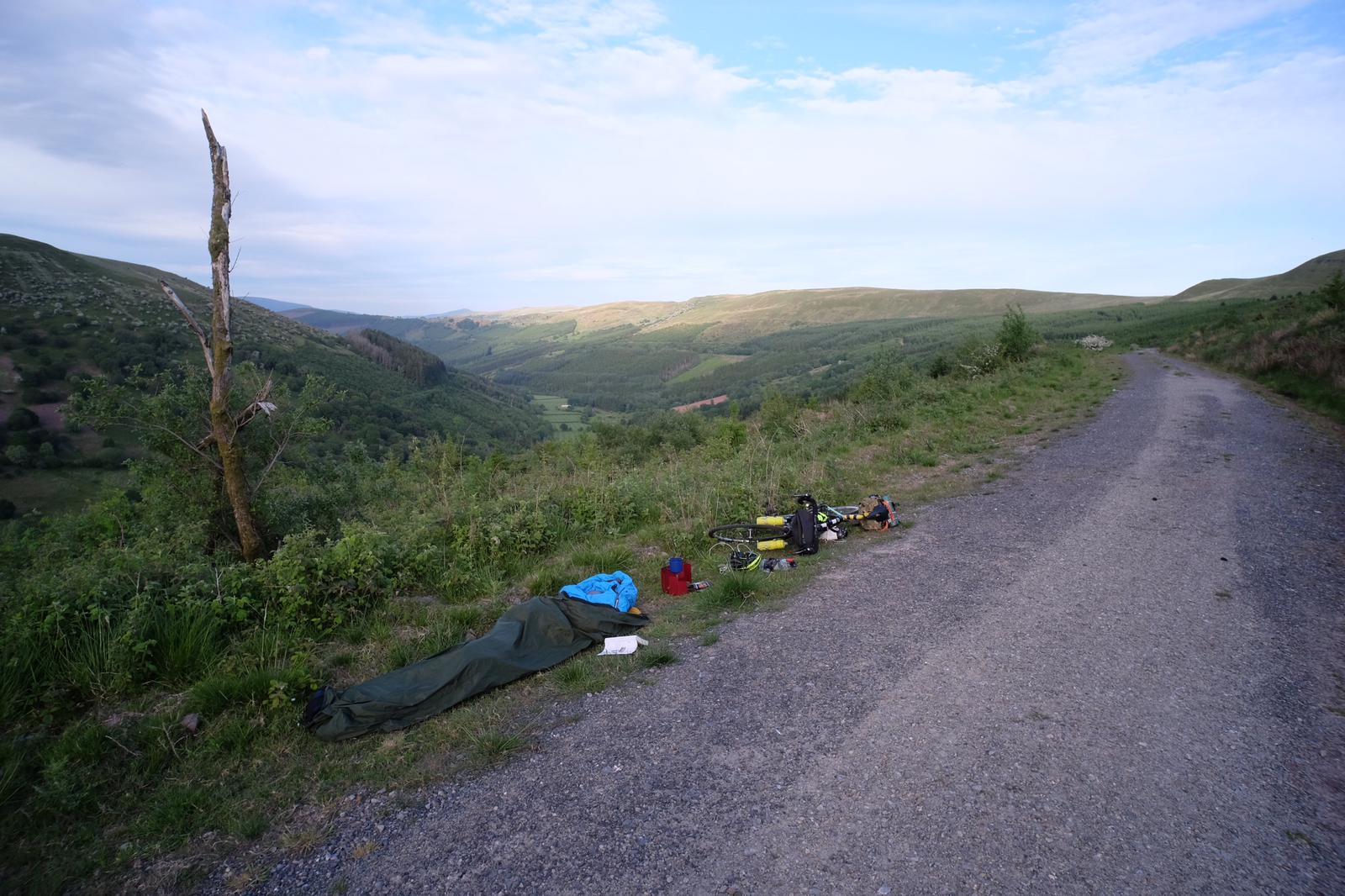

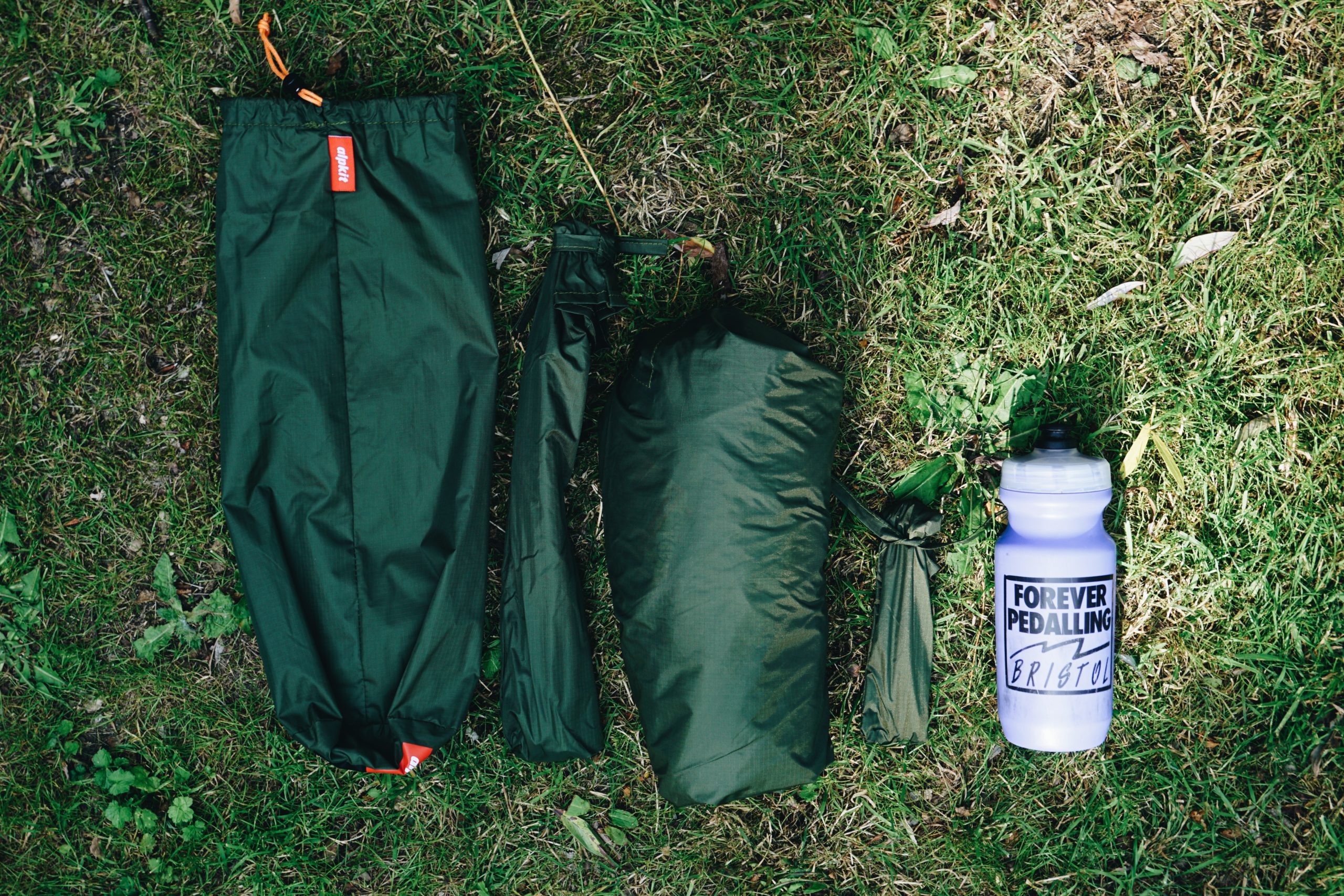


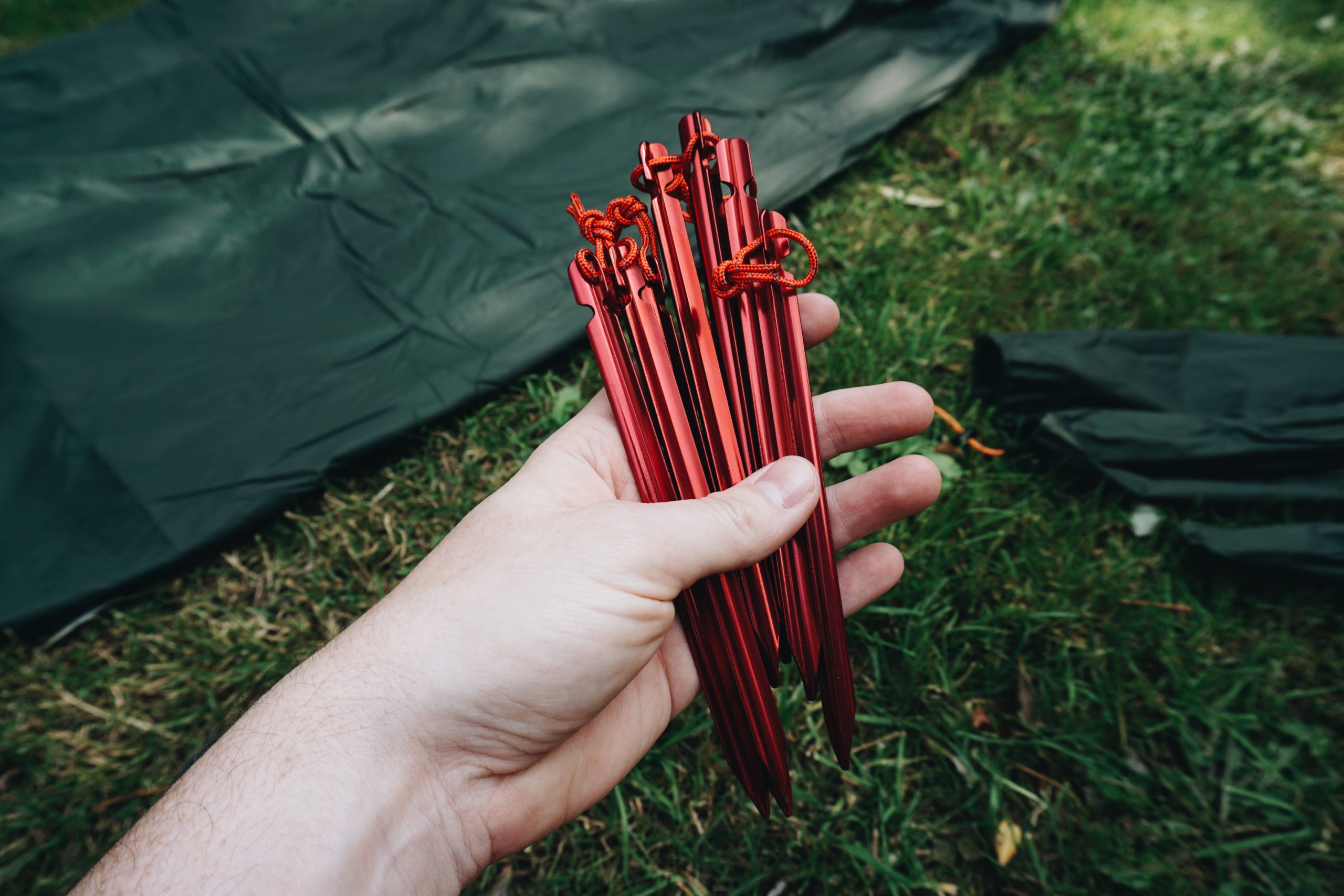

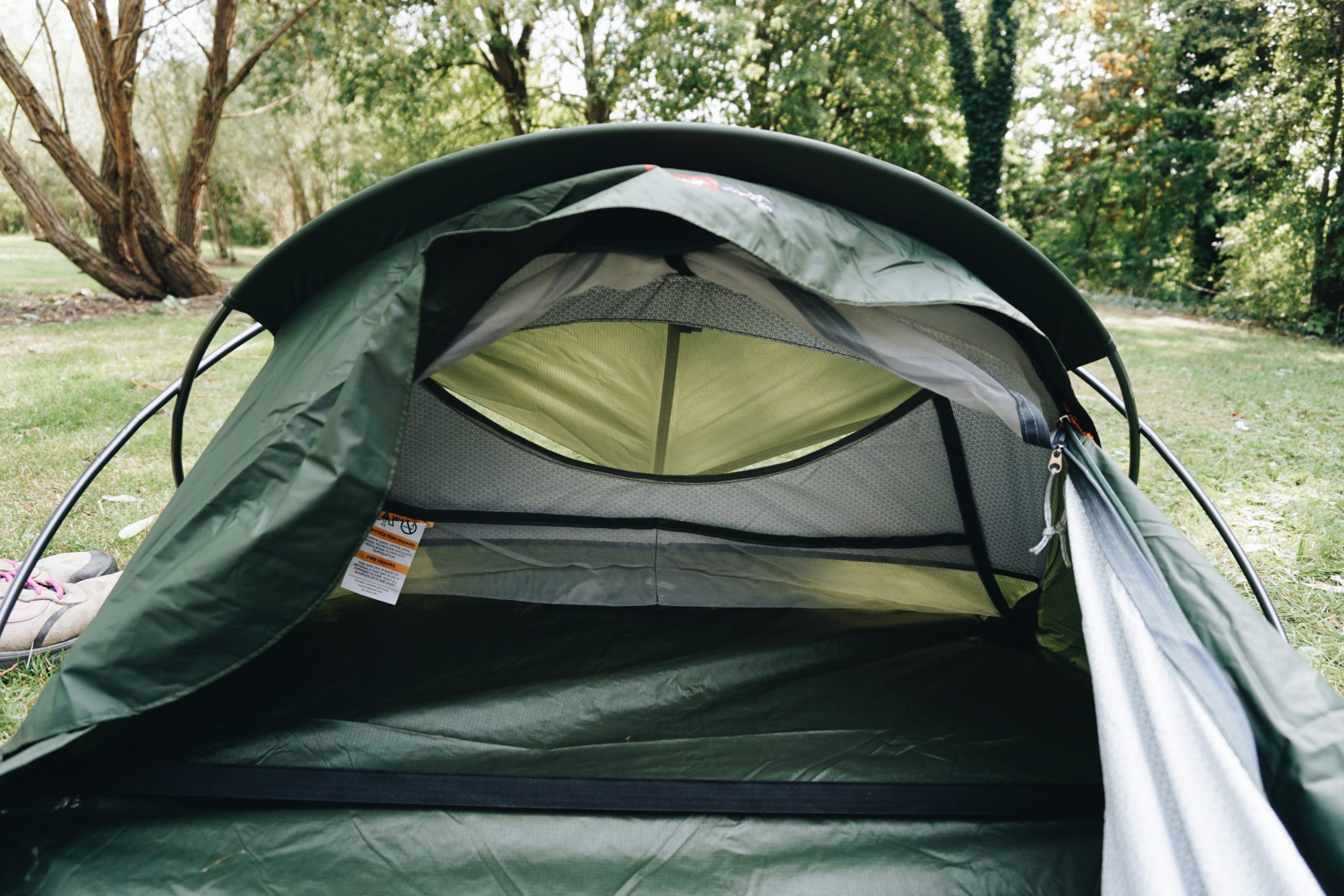
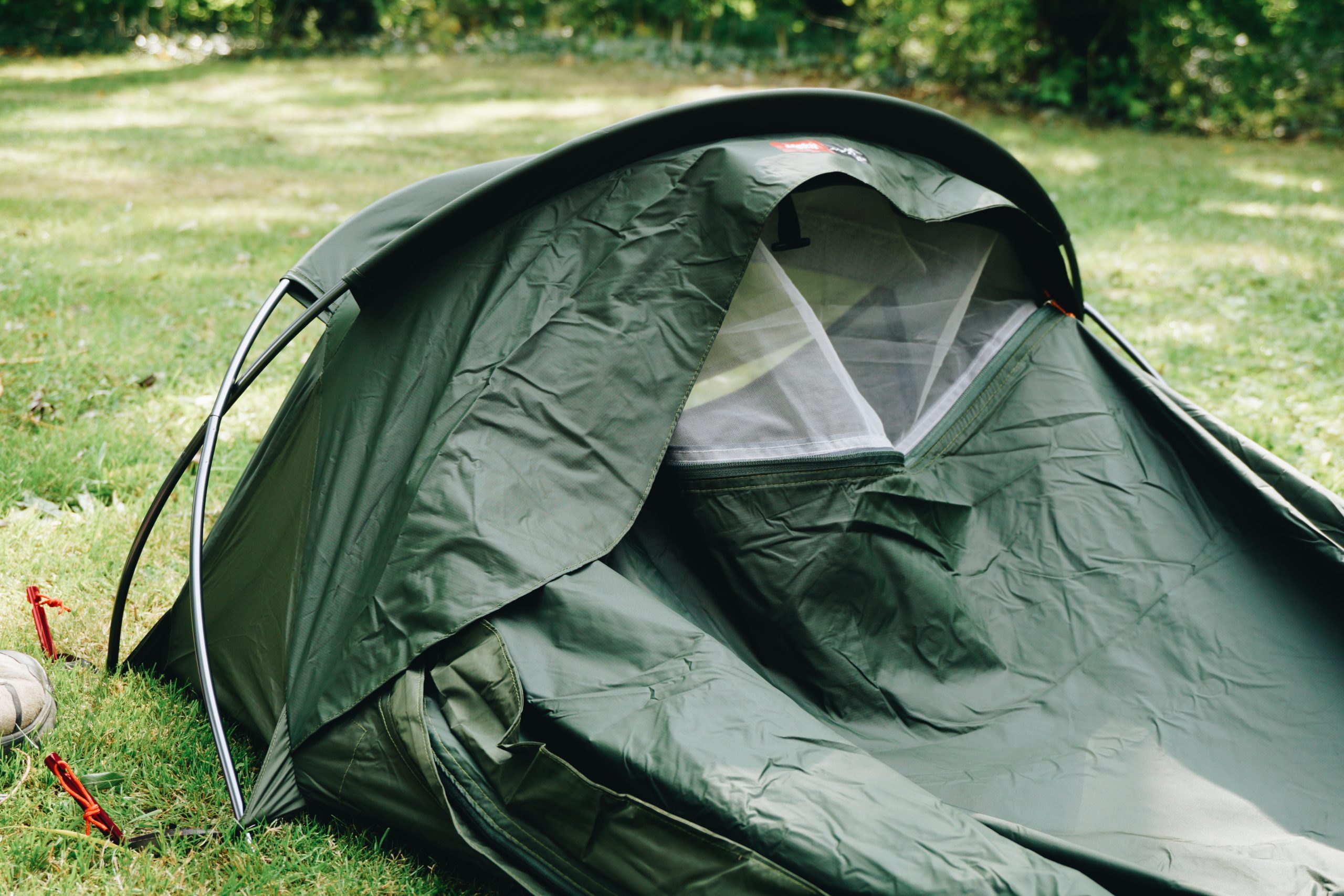
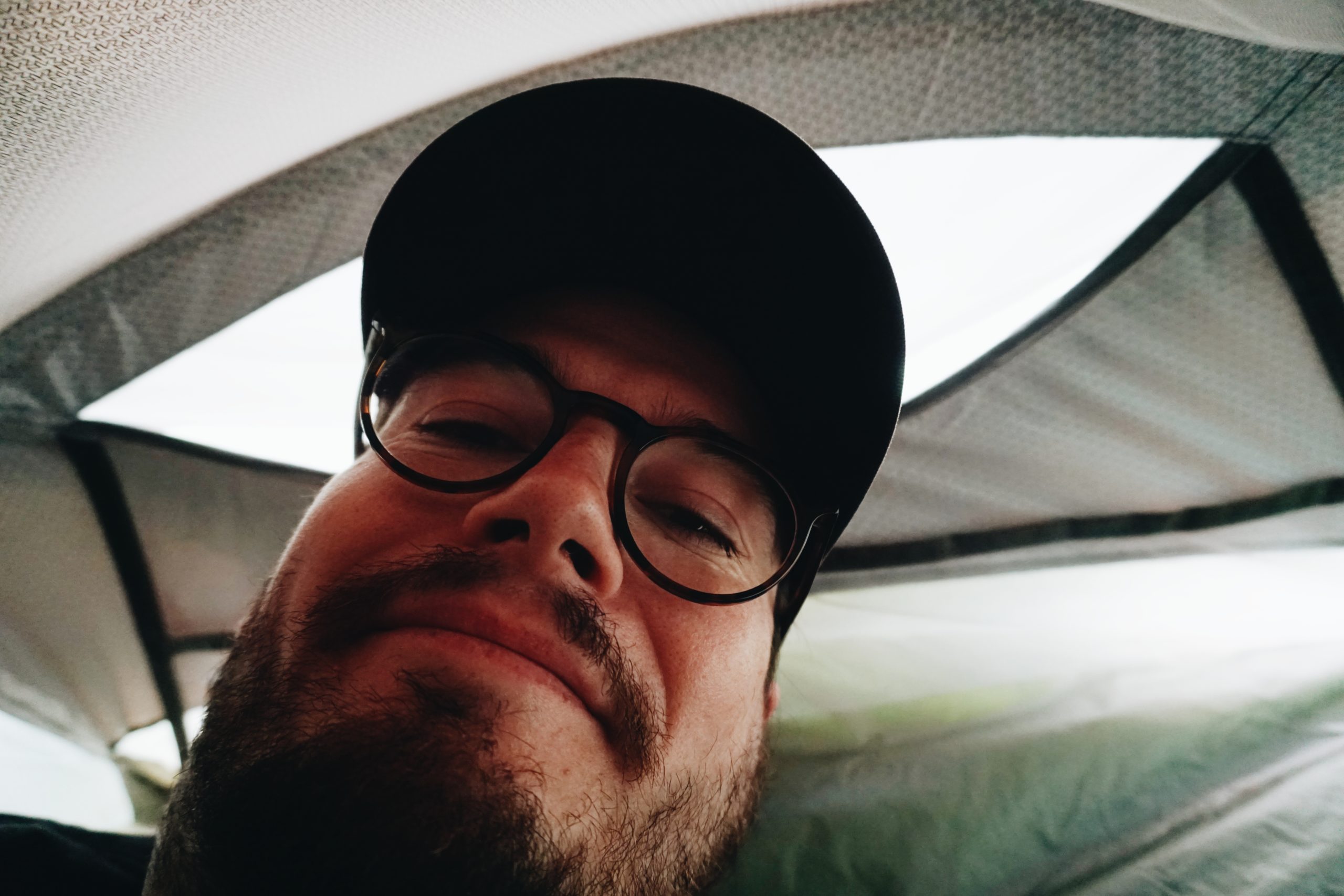

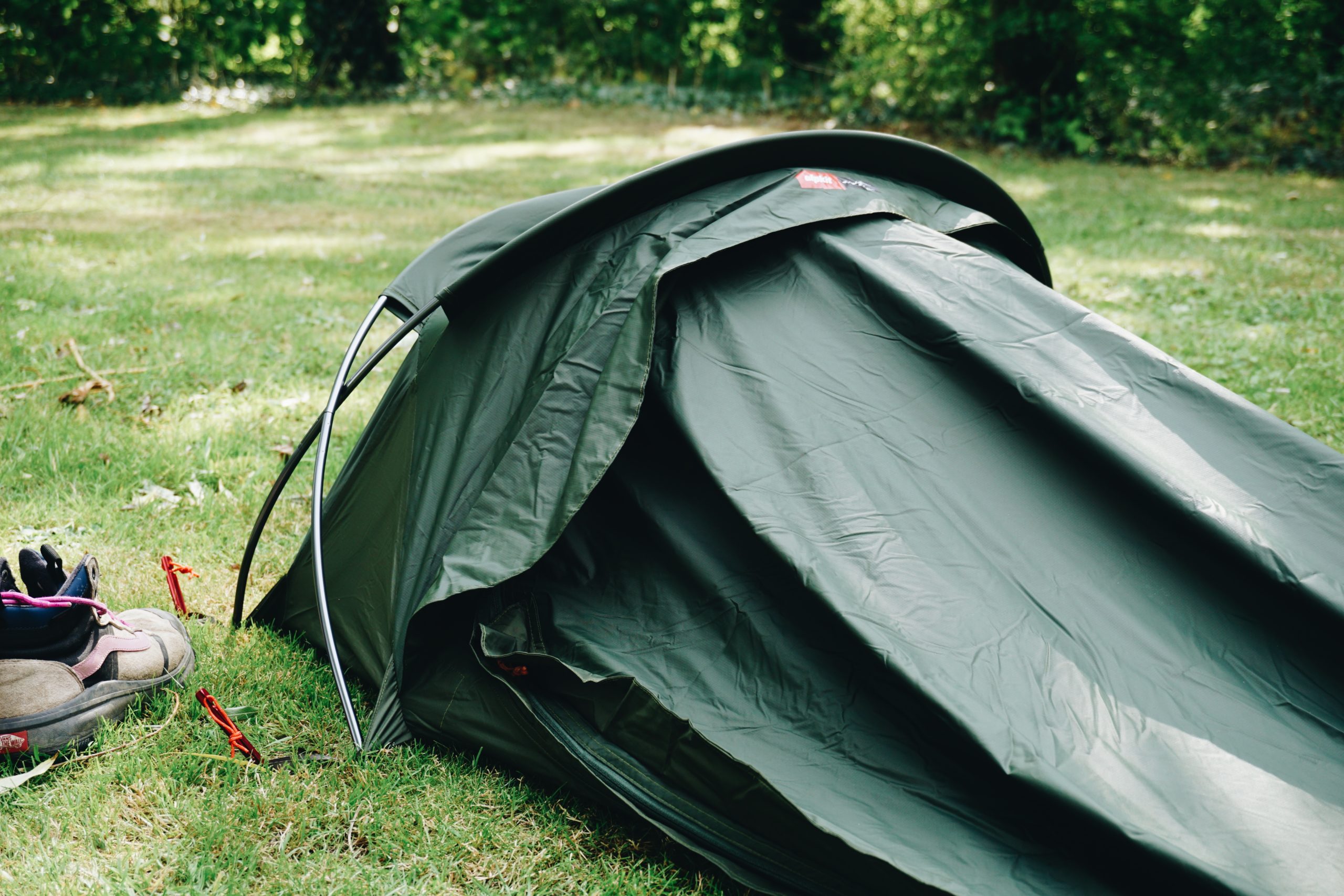


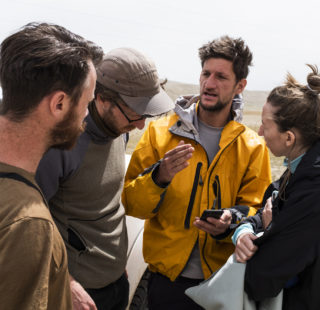
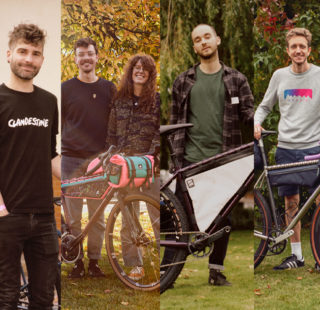








Thanks for the review Chris.
I was torn between the Elan bivvy and the next best thing in terms of weight, space and price – the Aplkit Soloist tent.
While a bivvy and an ultralight tent are two opposite shelter scenarios, I feel like a hooped bivvy is a middle-ground between the two. But its a balance hard to strike right. The Elan is almost the same weight as the Soloist and the pack size isn’t that much smaller. In terms of pitching time it’s obviously going to be quicker but again probably not by a lot. Lastly there’s only a negligible difference in price.
A bivvy, even hooped will be more inconspicuous but will ultimately offer worse protection and comfort in poor weather condition.
I went for the Soloist tent from Alpkit and can thoroughly recommend it. With the footprint option added it can be pitched with no inner. This setup reduces the pack size and weight to below what the Elan comes to.
It would be great to see Aplkit add a bug-net to their Hunka bivvy. That would make it perfect for quick overnighters in good weather.
Great to hear you’re happy with the soloist. You’re correct on so many points. The only downside of a tent is how conspicuous it is, which is where a bivvy holds an advantage of over in terms of footprint and height especially in this country for wild camping. I’d love to put together a little comparison of all the pros and cons between a bivvy, hoooped bivvy and tent as they all have different advantages and restrictions. It’s all down to what you’re going to be using it for at the end of the day!
I love my tent for camping especially if I’m going to be there more than 1 night, but there’s something great about having the bivvy to hand to just go out on a whim and not have to think about where I can pitch up.
I have just got the Elan. think it is badly designed all over, with cheap zips, and the zip is on the right. The hood over the front opening only goes half way,there is just a real cheap feeling to it. Oh and the breathability is rubbish too.
What are your previous comparisons Chris? Mine has held up incredibly well and the breathability has been fantastic with the ability to have 2 vents and much better than some other hooped bivvies especially at this price point.
My partner and I bought 2 Elan bivvys to use on remote climbing trips. We have just done our first 1 nighter and they worked great. It was a dry night, so were able to have the mesh ventilation and I was impressed that there was no build up of condensation. That might be a problem if zipped up fully. We did carry a small tarp and could of improvised cover to keep the mesh open. Very low profile makes me want to try it in some wilder weather and the colour is discreet.